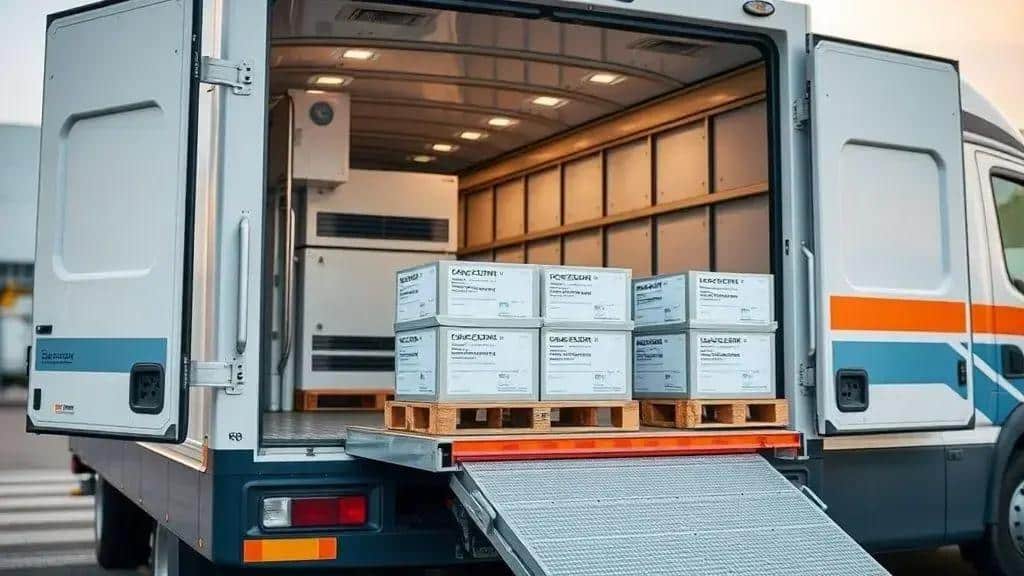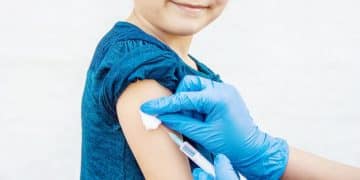Innovations in vaccine delivery systems enhance healthcare

Innovations in vaccine delivery systems, such as needle-free methods, temperature-controlled transport, and digital technologies, enhance accessibility and efficiency, ensuring effective immunization and improving public health outcomes globally.
Innovations in vaccine delivery systems are changing the landscape of public health. By exploring new technologies and approaches, we can better understand how these advancements improve accessibility and efficiency in immunization efforts worldwide.
Advancements in needle-free delivery methods
Advancements in needle-free delivery methods have significantly improved vaccine accessibility and comfort for patients. These innovative techniques offer a way to deliver vaccines without the use of traditional needles, reducing anxiety and pain associated with injections.
Types of Needle-Free Delivery Methods
Various technologies are being developed for needle-free vaccine delivery. These include:
- Jet injectors: Use a high-pressure jet to push vaccine through the skin.
- Micro-needles: Tiny needles that barely penetrate the skin and are less painful.
- Inhalable vaccines: Administered through the respiratory system, providing a needle-free alternative.
- Transdermal patches: Deliver vaccines through the skin over a period of time using microneedles.
These methods not only make vaccinations more comfortable but also encourage more people to get vaccinated. The ease of administration can lead to increased vaccination rates, especially in populations that may avoid traditional needles. Delivering vaccines using these advanced methods has the potential to enhance public health on a global scale.
Impact on Vaccine Distribution
The impact of needle-free delivery systems extends beyond comfort. These innovations can streamline the process of how vaccines are distributed, particularly in remote and underserved areas. For example, jet injectors can deliver vaccines rapidly, allowing healthcare workers to administer multiple doses quickly. This is especially crucial during pandemic outbreaks when timely immunization is essential.
Moreover, needle-free devices often require less training than traditional vaccination techniques. This means that more community members can participate in vaccination efforts, expanding outreach and access. As we look to the future, the integration of these systems into healthcare practices will be vital.
The role of temperature-controlled transport

The role of temperature-controlled transport is crucial for ensuring the effectiveness of vaccines. Proper storage and transportation maintain the required temperatures, which guarantees that vaccines remain stable and potent. Inadequate temperature control can lead to vaccine spoilage, reducing their efficacy.
Importance of Temperature Control
Keeping vaccines at the right temperature is vital during their journey from manufacturers to clinics. If vaccines are exposed to heat or extreme cold, they can lose their effectiveness. This is especially critical for mRNA vaccines, which are sensitive to temperature changes. Ensuring consistent temperature control involves:
- Utilizing refrigerated trucks: These trucks are specially designed to maintain specific temperature ranges.
- Employing digital temperature loggers: These devices monitor temperatures in real-time throughout the transport process.
- Training staff: It is essential for all personnel involved in vaccine transport to understand the importance of temperature control.
By implementing these practices, health organizations can significantly reduce the risk of vaccine degradation. Additionally, temperature-controlled transport helps to establish trust in vaccination programs. When communities know that vaccines are handled properly, they are more likely to receive immunizations.
Challenges in Temperature-Controlled Transport
Despite its importance, there are challenges in maintaining temperature-controlled transport. For example, power outages can affect refrigeration units. Similarly, logistics in remote areas complicate consistent temperature management. Addressing these challenges is essential to prevent spoilage and ensure widespread access to effective vaccines.
Technological advancements can help overcome these issues. Innovations such as solar-powered refrigeration units and advanced thermal blankets are making it easier to maintain proper temperatures during transport. By investing in these technologies, we can enhance vaccine delivery systems and improve overall public health.
Integration of digital technologies in vaccine delivery
The integration of digital technologies in vaccine delivery is revolutionizing the way vaccines are distributed and administered. With advancements in technology, healthcare systems are becoming more efficient and accessible, ensuring that vaccines reach those who need them most.
Digital Tools Enhancing Vaccine Delivery
Various digital tools are playing a significant role in improving the efficiency of vaccine delivery systems. These tools include:
- Mobile apps: Allow patients to schedule appointments and receive reminders for vaccinations.
- Blockchain technology: Ensures secure tracking of vaccine distribution, preventing fraud and ensuring transparency.
- Data analytics: Helps predict demand and allocate resources more effectively.
- Telehealth services: Provide access to vaccine education and consultations remotely.
By implementing these technologies, healthcare providers can enhance patient engagement and streamline the vaccination process. Mobile applications, for example, make it easier for individuals to keep track of their vaccination history, reducing missed appointments.
Impact on Outreach and Access
The use of digital technologies significantly impacts outreach and access, particularly in underserved communities. These technologies can provide crucial information about vaccine availability and enrollment processes. This is especially important in areas with limited healthcare infrastructure.
Additionally, remote consultations via telehealth allow healthcare professionals to reach patients who may face barriers to in-person visits. As a result, vaccination rates can increase, helping to protect communities from outbreaks.
Furthermore, data analytics can identify trends in vaccination rates, allowing health organizations to respond quickly to areas with low coverage. This proactive approach can lead to improved public health outcomes.
Case studies on successful vaccine deployment

Case studies on successful vaccine deployment provide valuable insights into effective strategies that enhance immunization rates. These examples demonstrate how various regions tackled challenges and achieved significant results.
Notable Examples of Vaccine Deployment
The following case studies highlight successful approaches to vaccine distribution:
- Rwanda: Leveraged mobile technology to track vaccination records, increasing the efficiency of their immunization program.
- India: Implemented community-based outreach to educate the public on vaccine importance, resulting in higher participation rates.
- United States: Utilized mass vaccination sites and mobile clinics during the COVID-19 pandemic to reach underserved populations.
- Chile: Introduced a centralized digital platform allowing for real-time data on vaccine distribution and administration.
By focusing on community engagement and leveraging technology, these countries achieved impressive vaccination coverage. For instance, Rwanda’s mobile tracking system significantly reduced missed vaccinations, ensuring that children received critical immunizations on time.
Lessons Learned from Deployment
Each case study offers unique lessons that can be adapted to different settings. For example, the importance of clear communication emerged as a common theme. Informing communities about the vaccine process and addressing concerns helped build trust and increased participation.
Access to vaccines is also critical. The use of mobile clinics, as seen in the U.S., allows healthcare providers to reach isolated communities, ensuring that everyone has the opportunity to get vaccinated. Such strategies not only improve access but also empower communities to take charge of their health.
Lastly, data-driven approaches, like those employed in Chile, showcase the value of using technology for monitoring and managing vaccine rollout. This helps identify gaps and obstacles, enabling timely interventions for better health outcomes.
FAQ – Frequently Asked Questions about Innovations in Vaccine Delivery Systems
What are needle-free delivery methods?
Needle-free delivery methods are techniques that administer vaccines without traditional needles, using technologies like jet injectors and micro-needles.
Why is temperature-controlled transport important?
Temperature-controlled transport is crucial to maintain the stability and effectiveness of vaccines during their journey from manufacturers to clinics.
How does digital technology enhance vaccine delivery?
Digital technology improves vaccine delivery by enabling better tracking, scheduling, and communication, which helps ensure that vaccines reach the right people on time.
What can we learn from successful case studies in vaccine deployment?
Successful case studies highlight the importance of community engagement, effective communication, and the use of technology in improving vaccination rates and public health.





